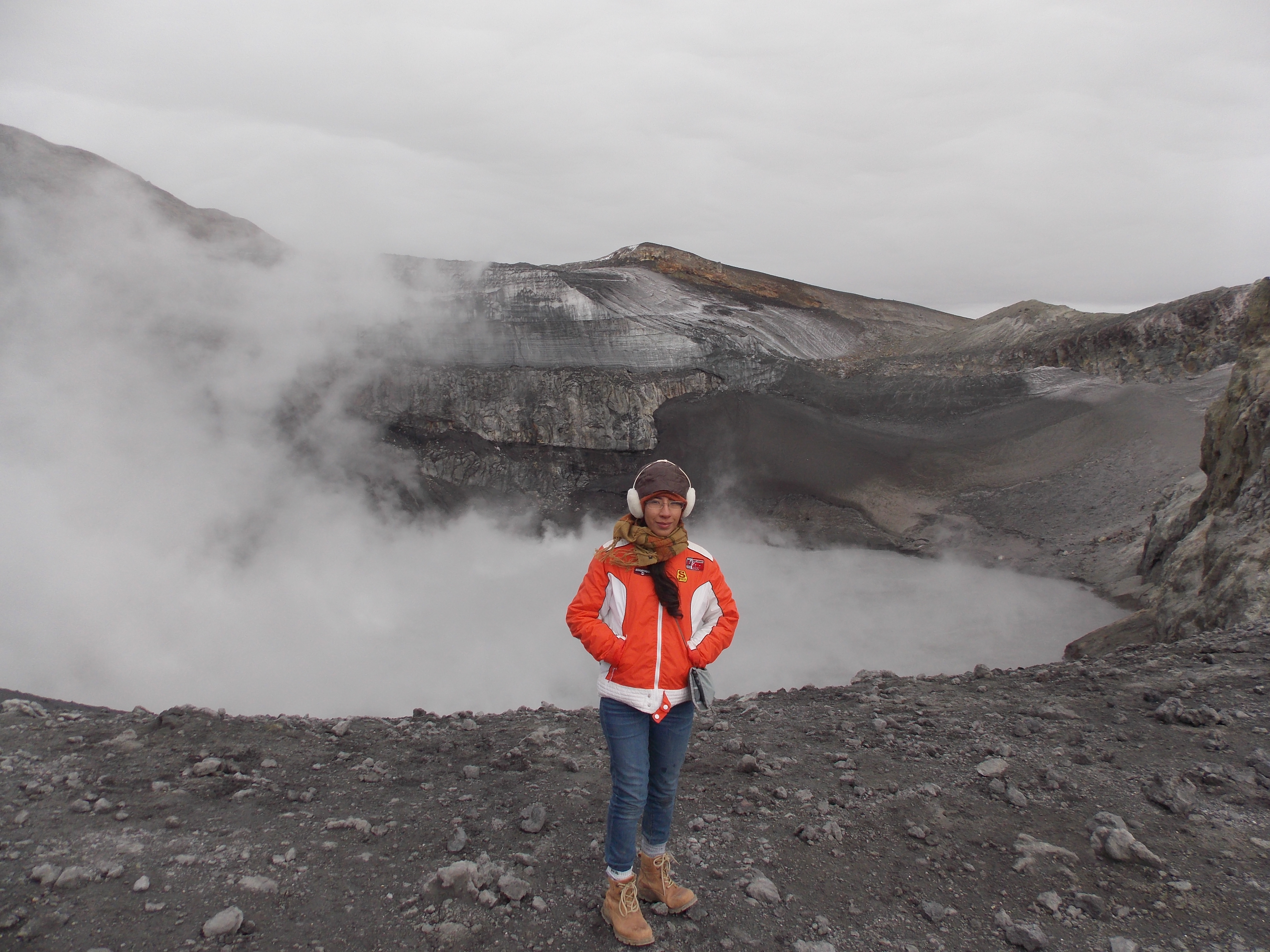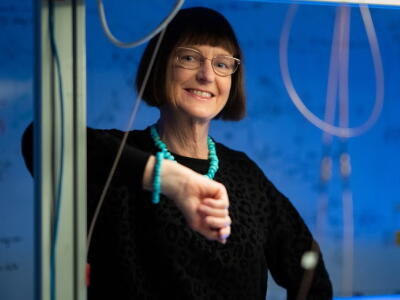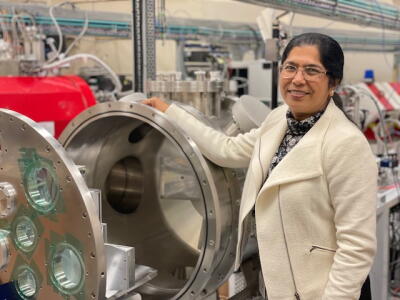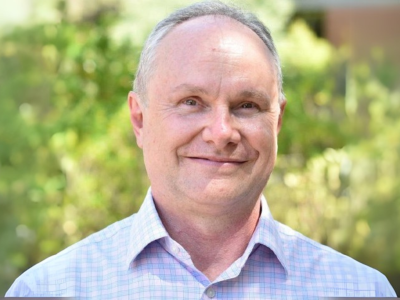Meet Ana: advancing our knowledge of the Earth through cutting-edge technology
By: Phillis Zeng
Posted on
If asked to describe herself, Dr Ana Casas Ramos uses the title of ‘rock detective’.
A geochemist and volcanologist from the Research School of Physics at The Australian National University (ANU), Casas Ramos spends her time investigating the mineral makeup of the rocks and dirt beneath our feet.
She believes every rock has a story to tell.
“Some minerals form only under specific temperature and pressure conditions. So, from bits and pieces of information, you can reconstruct the story of the geological processes that generated the rocks,” she says.
“It's all inside the rocks, and I love unravelling their stories. My research has shown me how alive the Earth truly is. There are so many things going on beneath the surface – it is up to us to listen and try to understand.”
Deciphering the signals of volcanoes
Born in Mexico, Casas Ramos’ passion for understanding the earth was sparked by her mother, Dr Silvia Ramos Hernández, a volcanologist at the University of Sciences and Arts of Chiapas (Universidad de Ciencias y Artes de Chiapas, UNICACH).

Dr Casas Ramos at Copahue Volcano in Argentina. Photo: supplied
Devastated by the catastrophic eruption of the El Chichón volcano in southern Mexico in 1982, which killed at least 1,900 people, her mother, then a biologist, decided to change her career path and became a volcanologist.
She founded a research centre and started monitoring two of Mexico’s deadliest volcanoes. She also established degree programs of earth sciences at UNICACH to educate future generations.
“She started everything from zero at a time when women weren’t treated equally,” Casas Ramos says.
“As her daughter, I saw how hard it had been for her, but thanks to her work and persistence, El Chichón won’t catch people by surprise again. And that brings my mum a lot of peace.
“As a female scientist, she is my ultimate role model.”
Inspired by her mother’s work, Casas Ramos conducted her own research at El Chichón as part of her master’s degree, improving volcanic predictions by monitoring a special chemical species in the crater lake that would signal eruptions.
“There are so many people living around volcanoes, and I used to teach children about volcanic activities and what to do in an emergency,” she says.
“My work might directly affect their lives.”
After that, she completed her PhD in experimental volcanology in Germany, where she simulated volcanic eruptions in the lab to examine the environmental impact of the chemical reactions occurring during eruptions.

Dr Casas Ramos at El Chichon volcano crater lake with her mother. Photo: Supplied
“When I first left Mexico to do my PhD in Germany, it was scary. I didn't know anyone there, I didn't speak the language, and I knew I wouldn't see my family often,” Casas Ramos says.
“But I was also very excited. I knew I would learn a lot, widen my professional network and grow from the whole experience.
“It is normal to have fears in life, but if you let them hold you back, you might miss out on wonderful experiences.”
The detective work for net-zero
Despite the fear of leaving the life she built in Germany behind, Casas Ramos moved to Australia and ANU excited by the new learning and life experiences she would have.
Now, she has partnered with Rio Tinto, one of the world’s largest international mining companies, to improve the company’s mining workflow in order to boost mining efficiency and reduce environmental impact.
“Understanding what’s inside a rock before processing it can make a significant difference across the entire mining workflow,” she says.
“If you know what minerals are in a rock, where they’re located, and how the rock will break, you can design the most efficient way to crush it – extracting the minerals precisely while using less energy, water and chemicals.”
Her work consists of taking CT images – like those used to scan the human body – to create a full 3D image of the rock. She then uses electron microscopes to examine subsamples of the rock and identify the minerals inside.
“The breakthrough of using the CT technology in rock characterisation is that we can understand the inner properties of the rock without destroying it, which can save a lot of work, energy and cost,” she says.
“We are also feeding our experimental data to AI for large data processing and developing AI automation to optimise the workflow for the future.”
In particular, this process can help with identifying copper, an essential ingredient for clean energy technologies.
“Copper is one of the minerals crucial for us to reach Net Zero emission by 2050,” Casos Ramos says.
“We need an increasing amount of copper as it’s the main component of batteries, electricity wires and clean energy technologies.
“My research aims to help meet this demand while minimising its impact on the environment.”

Dr Casas Ramos at Mt St Helens. Photo: supplied
Listening to the earth
Casas Ramos says it’s rewarding to take on new opportunities and contribute to advancing science and technology for a cleaner future.
“My background in volcanology has equipped me with necessary knowledge to characterise geological materials, and that’s what I’m doing right now,” she says.
“I’m excited to be part of this project to develop pioneering technologies that will transform mining practices to minimise its environmental impact.”
Although she’s a long way from home – and can only enjoy good Mexican food when she visits her parents – Casos Ramos is grateful for the chances she’s taken.
“I don't regret things not going according to plan because all the things I've experienced – good and bad – have been lessons that made me resilient and stronger and I wouldn't be here if that hadn't happened,” she says.
This article was co-published with ANU Reporter.
You may also like
ANU physicist making waves in space joins top global society
A theoretical physicist from The Australian National University (ANU) whose pioneering work has fundamentally altered our understanding of the deepest and darkest parts of the Universe and space-time…
Nanda's badge of pride in Australian nuclear physics
Professor Nanda Dasgupta feels the word nuclear could do with a rebrand.
Professor Andrew Rohl appointed Interim Director of NCI
Computational scientist Professor Andrew Rohl will join The National Computational Infrastructure (NCI) as Interim Director from 24 March 2025.


